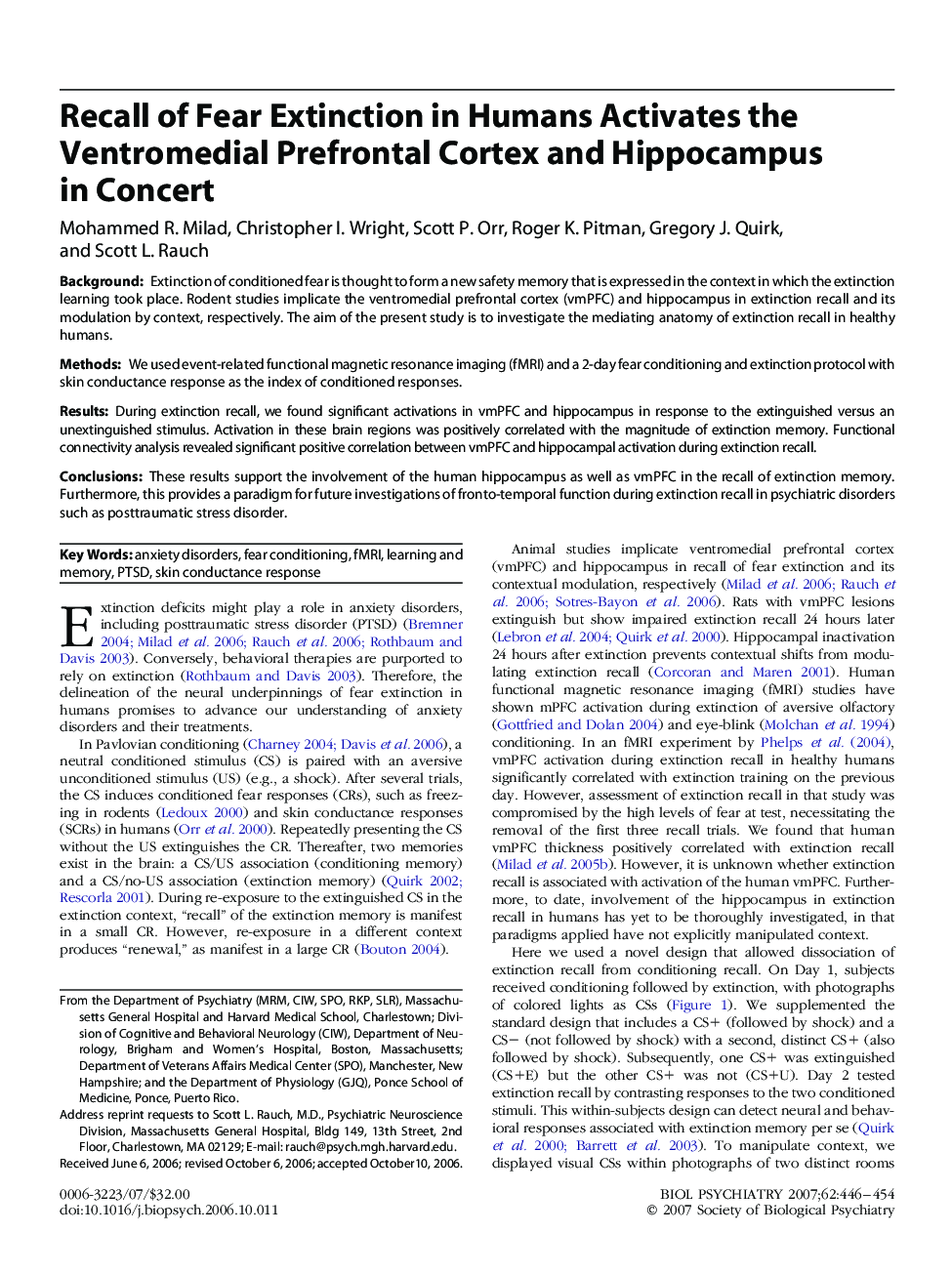| Article ID | Journal | Published Year | Pages | File Type |
|---|---|---|---|---|
| 4180288 | Biological Psychiatry | 2007 | 9 Pages |
BackgroundExtinction of conditioned fear is thought to form a new safety memory that is expressed in the context in which the extinction learning took place. Rodent studies implicate the ventromedial prefrontal cortex (vmPFC) and hippocampus in extinction recall and its modulation by context, respectively. The aim of the present study is to investigate the mediating anatomy of extinction recall in healthy humans.MethodsWe used event-related functional magnetic resonance imaging (fMRI) and a 2-day fear conditioning and extinction protocol with skin conductance response as the index of conditioned responses.ResultsDuring extinction recall, we found significant activations in vmPFC and hippocampus in response to the extinguished versus an unextinguished stimulus. Activation in these brain regions was positively correlated with the magnitude of extinction memory. Functional connectivity analysis revealed significant positive correlation between vmPFC and hippocampal activation during extinction recall.ConclusionsThese results support the involvement of the human hippocampus as well as vmPFC in the recall of extinction memory. Furthermore, this provides a paradigm for future investigations of fronto-temporal function during extinction recall in psychiatric disorders such as posttraumatic stress disorder.
